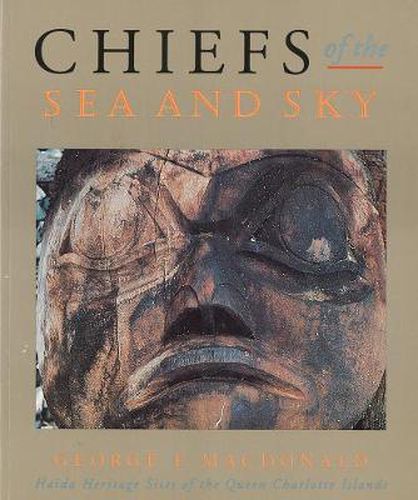Readings Newsletter
Become a Readings Member to make your shopping experience even easier.
Sign in or sign up for free!
You’re not far away from qualifying for FREE standard shipping within Australia
You’ve qualified for FREE standard shipping within Australia
The cart is loading…






In 1966 the National Museum of Man launched a major program of prehistoric research on the northern coast of British Columbia, a project which was carried out over two decades. An important part of that program was the mapping and recording of the major villages of the Haida on the Queen Charlotte Islands. In Chiefs of the sea and sky , archaeologist George F. MacDonald provides an overview of this extensive research on the Haida. He recounts the history of eighteen of the major villages, telling the story of their people and describing the site of their houses and other known structures. In his introduction, he explains how the Haida’s immense cedar houses and totem poles are part of a fascinating spiritual and material culture which integrates family, history, ritual and methodology. The numerous historical photographs which accompany the text illustrate the richness and variety of Haida sculpture; they show the villages at the height of their glory in the 1880s and 1890s and in their subsequent and tragic decay. George F. MacDonald is Director of the Canadian Museum of Civilization. He is the author of Haida monumental art.
$9.00 standard shipping within Australia
FREE standard shipping within Australia for orders over $100.00
Express & International shipping calculated at checkout
In 1966 the National Museum of Man launched a major program of prehistoric research on the northern coast of British Columbia, a project which was carried out over two decades. An important part of that program was the mapping and recording of the major villages of the Haida on the Queen Charlotte Islands. In Chiefs of the sea and sky , archaeologist George F. MacDonald provides an overview of this extensive research on the Haida. He recounts the history of eighteen of the major villages, telling the story of their people and describing the site of their houses and other known structures. In his introduction, he explains how the Haida’s immense cedar houses and totem poles are part of a fascinating spiritual and material culture which integrates family, history, ritual and methodology. The numerous historical photographs which accompany the text illustrate the richness and variety of Haida sculpture; they show the villages at the height of their glory in the 1880s and 1890s and in their subsequent and tragic decay. George F. MacDonald is Director of the Canadian Museum of Civilization. He is the author of Haida monumental art.